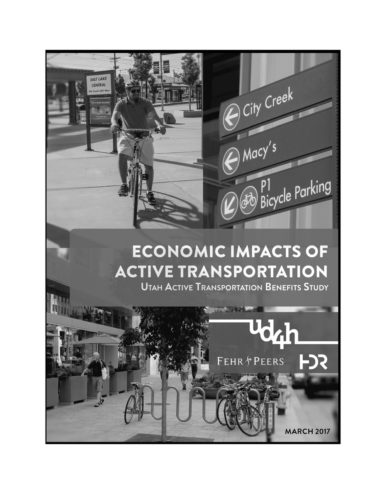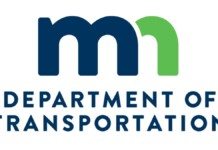There is a large push across Utah toward encouraging more widespread use of active transportation modes. This includes bicycling and walking for both transportation and recreation. In his “Utah Life Elevated 2020” objectives, unveiled at the end of May, Utah Governor Gary Herbert stated the following goal: “Develop an additional 1,000 miles of family-friendly trails and bike paths over the next 10 years to provide and promote active connections to school, work and outdoor recreation in urban and rural communities throughout the state.”
 A recent study commissioned by the Utah Transit Authority, Bike Utah, and other partners quantified some of the economic and health benefits associated with active transportation. The year-and-a-half long study engaged many stakeholders and created county-level profiles as well as county-level analyses and tools. The study deliverables included a review of existing data via a literature review, a compilation of best practices related to engineering, education, and encouragement of active transportation as well as an economics analysis report to quantify the direct, indirect, and induced benefits of active transportation in Utah.
A recent study commissioned by the Utah Transit Authority, Bike Utah, and other partners quantified some of the economic and health benefits associated with active transportation. The year-and-a-half long study engaged many stakeholders and created county-level profiles as well as county-level analyses and tools. The study deliverables included a review of existing data via a literature review, a compilation of best practices related to engineering, education, and encouragement of active transportation as well as an economics analysis report to quantify the direct, indirect, and induced benefits of active transportation in Utah.
Bicycle related business and tourism have an economic impact of $425 million and are responsible for more than 3,500 jobs across the state. The study identified two case studies showing the economic impact of specific multi-use path and bicycle trails. The Murdock Canal Trail in Utah County costs $113,000 each year to maintain, however it generates over $3,600,000 million annually in economic impact. This is in addition to a one-time economic impact of $26 million and 234 jobs to build the trail. Bicyclists who visit Dead Horse Point trails in Moab generate $19 million annually in economic impact (more than $11 million from overnight trips).
There are also significant health benefits that can be realized from engaging in active transportation. Nearly 45 percent of Utahans get less than the 150 minutes of recommended physical activity each week. These people could save $3.07 in annual healthcare costs for every mile they walk or $0.75 for every mile they bike. For example, if a person walked 2 miles per day, every day of the year, they would average $2,235 in annual savings on their healthcare costs. A similar person riding a bicycle 10 miles per day would save $2,730 each year.
In addition to the informational reports, a series of calculators have been created out of this study that can be used by communities to assess the economic and health impacts of specific infrastructure developments or active transportation events, such as organized bike rides. The calculators are specific to each of the counties in Utah and are available for any community members to use. The study and the associated calculators are available here: www.bikeutah.org/atbenefitsstudy
The full report is available at: Economic Impacts of Active Transportation: Utah Active Transportation Benefits Study
Partners on this study included: UTA; Bike Utah; Utah Department of Transportation; Governor’s Office of Energy Development; Utah Department of Health; Salt Lake County Health Department; Salt Lake County Office of Regional Transportation, Housing, and Economic Development; Wasatch Front Regional Council; Tooele County Health Department; Weber-Morgan Health Department; Mountainland Association of Governments; Park City Municipal Corporation; Intermountain Healthcare; and the Salt Lake County Bicycle Advisory Committee.










